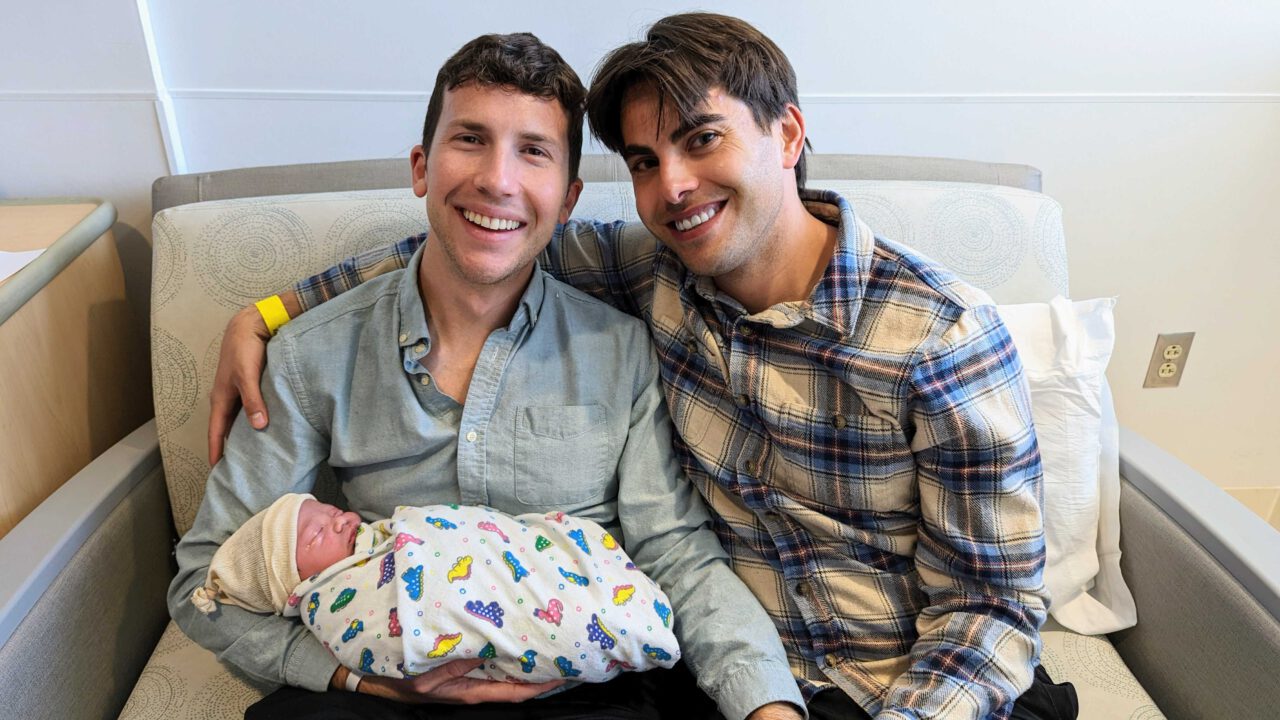One year ago, we interviewed our Vice President of Mid-Market Sales Michael Schwartz to discuss his recent experience of taking paid parental leave as part of a two-father household. This Father’s Day, we wanted to check in with Michael to see how fatherhood is going, and what it’s like being a working parent.
Emma: Looking back, did paid leave have any benefits that you weren’t initially expecting?
Michael: It was so important to have dedicated bonding time with my newborn, without having to worry about work. Especially being my first child, I had no idea what I was doing or what I needed around the house!
Emma: Why is inclusive leave so necessary in today’s world?
Michael: More and more companies are using “leave as a benefit” in their talent strategies. Inclusive benefits help attract and retain the best talent. Inclusive benefits also help companies treat their employees fairly, to avoid any bias.
Emma: How is fatherhood going so far, and what is it like being a working parent?
Michael: Our daughter recently started daycare. We’ve had to coordinate drop-off and pickup times around our work schedules, and be flexible when she is home sick. I’m grateful that AbsenceSoft is so supportive and flexible of working parents like me!
Emma: We are so glad to hear you and your family are doing well Michael!

Below is our original interview with Michael in 2022:
Protections under employment laws for same-sex couples continue to evolve, especially as it relates to parental leave. Notably, in 2015, the Department of Labor (DOL) issued its Final Rule revising the definition of “spouse” under the FMLA. This change ensured alignment with the Supreme Court’s decision in Windsor, which declared the Defense of Marriage Act (DOMA) unconstitutional and provided same-sex couples marriage equality under the law.
As a result, the DOL’s Final Rule declared that “Spouse,” under the FMLA shall be defined as a couple who enters a legally binding marriage in any state. This redefinition of Spouse allowed more historically ‘non-traditional’ families protections to care for themselves or family members under the FMLA.
It continues to be important for employers to continue positioning their employee leave and absence programs on employee inclusion and regulatory compliance. Employers are reminded to check local, state, and federal laws, which may have varying definitions of “family member” or “spouse,” to properly determine an employee’s eligibility for pay and job protection when they need time away from work.
As a leader in leave management software, we deeply understand the value of paid parental leave and how essential it is for employers to provide inclusive support for all employees that are establishing families, with the ability to take paid time off after the birth of a child.
Paid parental leave reduces financial stress and allows parents to prioritize bonding with their child, which also positively impacts physical and mental health, regardless of their specific family situation.
Our VP of Product Compliance, Ashlee Brennan, sat down with Michael Schwartz, our VP of Mid-Market Sales, to discuss his recent experience of taking paid parental leave as part of a two-father household.

Ashlee: Michael, as a new employee who recently returned from a leave of absence, I was hoping you could tell us a little more about that leave and how it impacted your family.
Michael: My husband and I welcomed a baby girl via surrogacy in April 2022. I felt incredibly fortunate to have been given paid leave in order to care for and bond with my daughter.
Ashlee: How did your experience differ from a ‘traditional’ birth and bonding leave?
Michael: As a same-sex couple, our journey to having a child required plenty of advance planning. We chose to have a child via IVF and surrogacy, which was an emotional, expensive, and years-long journey. We had dozens of appointments with agencies, lawyers, and doctors leading up to the pregnancy. None of our expenses were covered by insurance. Our surrogate lived and gave birth in a different state, so we didn’t have the comfort of home the week before and after the birth. There were many moving pieces, but it was all worth it when our baby girl was born!
Ashlee: I know that you started employment in February, and your daughter was born in April; how were you able to take a leave of absence so soon? Many employers require employees to follow FMLA eligibility rules. Can you tell us more about your experience?
Michael: I learned about this job opportunity with AbsenceSoft when our surrogate was 6 months pregnant, and it just happened to be the perfect fit. I didn’t have any legal entitlement to a paid leave of absence, and unpaid leave would be a significant financial burden. I was nervous about how to navigate this. I decided to be transparent about my situation during the interview process and was able to get approval for paid leave. The AbsenceSoft team was so supportive of my situation, which was a huge reason I decided to accept the job offer! It was a leap of faith for my manager and I to start a new role and then soon afterward take a leave of absence – but I’m so glad we made it work.
Ashlee: What advice would you give to expecting or newly bonded parents in a similar situation?
Michael: If you’re in the process of planning for your family, and are applying for new jobs, be sure to determine how you’re going to approach the conversation about leave of absence and pay. Finding an employer who can support you during this transition is invaluable.
Ashlee: Did you feel supported by your colleagues and manager during and after your leave?
Michael: My manager and my team supported me 100% (they continue to ask me for baby pictures, even a couple months later!). I was able to completely disconnect from work while I was out. It’s a testament to AbsenceSoft’s people-first company culture.
Ashlee: What advice would you give to employers who are looking to ensure their leave and absence policies are inclusive for all families?
Michael: Inclusive leave policies can drive talent attraction and retention. Be mindful that there are many ways for families to welcome a new child, and there is no singular notion of what a family looks like.
Families come in all shapes, sizes, and colors, just like your best talent. Inclusive leave policies directly contribute to bringing in the best talent and retaining those employees. Don’t miss out on great people due to your leave policy. As always, we are here to help if you have questions!
Resources
FMLA Employer’s Guide: https://www.dol.gov/agencies/whd/fmla/employer-guide
Final Rule Fact Sheet: https://www.dol.gov/agencies/whd/fmla/spouse/fact-sheet
Final Rule FAQ: https://www.dol.gov/agencies/whd/fmla/spouse/faq

